Welcome to our guide on White Faced Cockatiel care and personality traits. If you’re considering a pet bird, the White Faced Cockatiel is a wonderful choice. Known for its striking appearance and unique characteristics, this cockatiel mutation is sure to capture your heart. In this article, we will cover everything you need to know about caring for these beautiful birds, including their habitat, physical description, social behaviors, and more.
Core Insights to White Faced Cockatiel:
Scientific Classification of White Faced Cockatiels
The White Faced Cockatiel, scientifically known as Nymphicus hollandicus, is a unique color mutation of the cockatiel species. Let’s explore the fascinating classification of these beautiful birds.
| Kingdom | Phylum | Class | Order | Family | Genus |
|---|---|---|---|---|---|
| Animalia | Chordata | Aves | Psittaciformes | Cacatuidae | Nymphicus |
The White Faced Cockatiel species belongs to the Animalia kingdom, Chordata phylum, Aves class, Psittaciformes order, Cacatuidae family, and Nymphicus genus. This distinct color mutation is not found in the wild and is a result of selective breeding.
With its striking appearance and unique characteristics, the White Faced Cockatiel continues to captivate bird enthusiasts around the world.
Distribution and Habitat
The white faced cockatiel, a captivating cockatiel mutation with a unique appearance, is not found in the wild. These beautiful birds are exclusively available through reputable breeders. However, understanding their natural distribution and habitat can provide valuable insights into their adaptability as pets.
The white faced cockatiel’s natural habitat is the mainland regions of Australia, excluding Tasmania. These birds are known as nomads, moving with the seasonal fluctuations of food and water supplies. Their ability to adapt to various habitats allows them to thrive in different environments.
While white faced cockatiels are indigenous to Australia, they have gained popularity as pets around the world for their striking appearance and engaging personality traits.
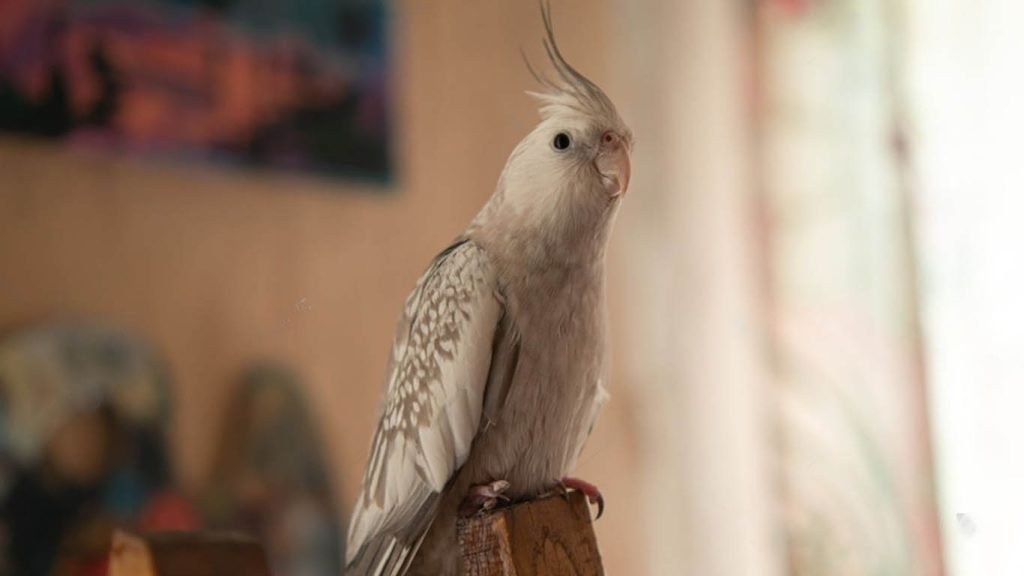
Physical Description of White Faced Cockatiels
White Faced Cockatiels are known for their stunning appearance. They have a charcoal gray plumage that lacks yellow coloring and orange cheek patches. The most distinctive feature is the color of their face, which differentiates males and females. Males have a white face, while females have a grayish face.
These cockatiels are of average size, measuring around 12 to 13 inches in length. In terms of weight, they typically weigh between 3 to 4 ounces.
Fun Fact: Did you know that White Faced Cockatiels are prized for their unique and eye-catching appearance?
Take a look at this beautiful White Faced Cockatiel:
White Faced Cockatiel Physical Description at a Glance:
| Characteristic | Description |
|---|---|
| Plumage Color | Charcoal gray without yellow coloring |
| Face Color | Males: White Females: Grayish |
| Length | 12 to 13 inches |
| Weight | 3 to 4 ounces |
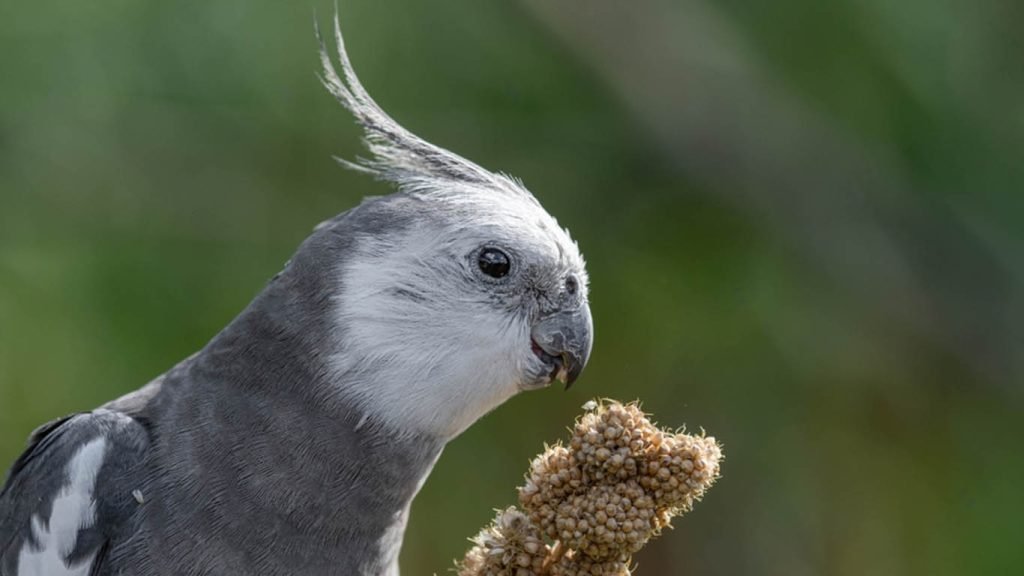
Care and Feeding of White Faced Cockatiels
Providing proper care and feeding is essential for the health and well-being of your white faced cockatiel. These beautiful birds require a spacious cage that allows them to move around comfortably. A cage size of at least 24″ length by 18″ high and 18″ wide is recommended to ensure they have enough room to exercise and explore.
When it comes to their diet, a balanced and varied approach is key. White faced cockatiels should be offered a mix of sprouts, seeds, nuts, fruits, vegetables, and commercial pellets. This diverse diet helps to ensure they receive all the necessary nutrients for optimal health. Regularly provide fresh water in a clean dish, and make sure to clean and refill it daily.
Additionally, bathing is an important part of white faced cockatiel care. These birds enjoy bathing and should be provided with a shallow dish of water for them to bathe in. Offering this opportunity for regular bathing helps to keep their feathers clean and healthy.
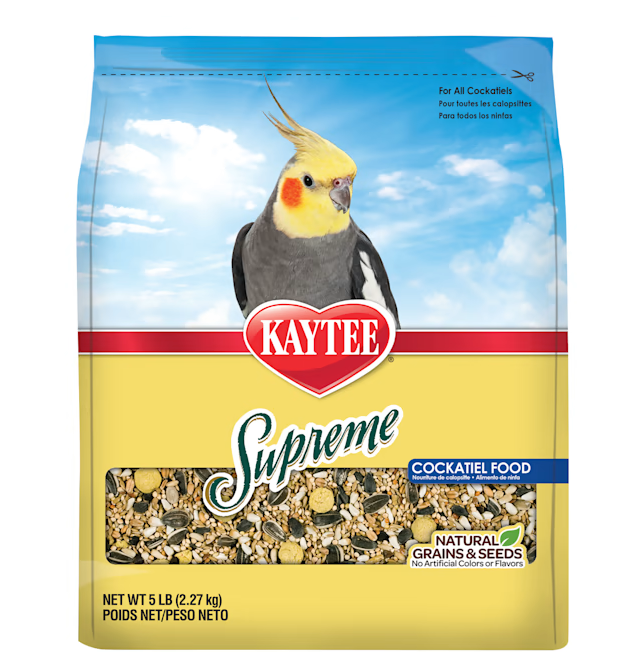
Kaytee Supreme Daily Blend Cockatiel Food
Tips for White Faced Cockatiel Care and Feeding:
- Ensure the cage is large enough for the cockatiel to move around comfortably.
- Provide a mix of sprouts, seeds, nuts, fruits, vegetables, and commercial pellets for a balanced diet.
- Offer fresh water in a clean dish and refill it daily.
- Allow regular opportunities for bathing in a shallow dish of water.
“Proper care and feeding are essential for keeping your white faced cockatiel happy and healthy.”
Social Behaviors of White Faced Cockatiels
White Faced Cockatiels thrive on social interactions and enjoy spending time with their family members and other cockatiels. They are naturally social birds and can form strong bonds with their owners if properly bonded. These intelligent and affectionate birds are known for their loving and devoted nature, making them wonderful companions.
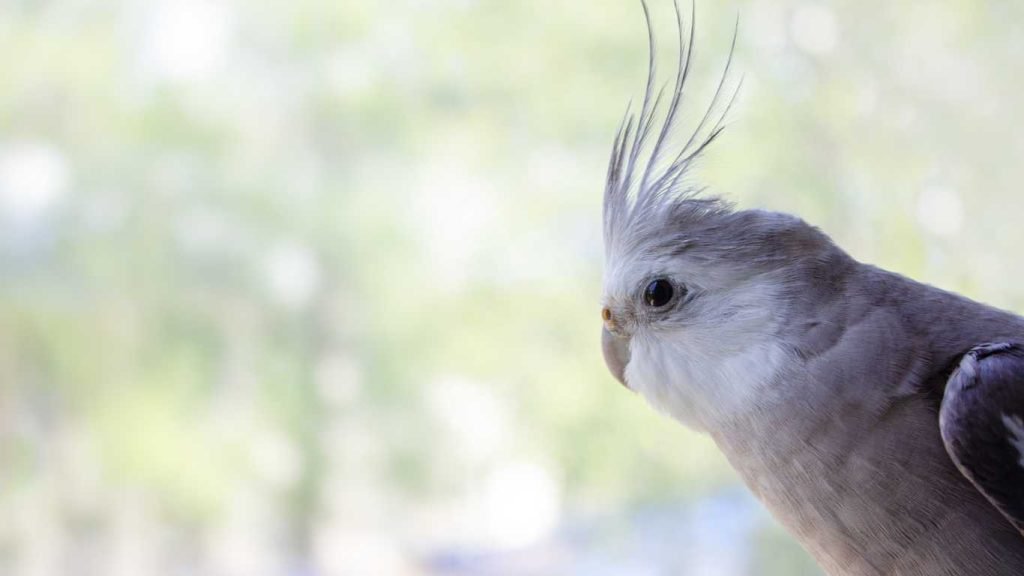
Unlike some other parrots, White Faced Cockatiels are not noisy birds and can be left alone for extended periods of time without causing disturbance. However, they do thrive with companionship and should have opportunities for social interaction to maintain their mental and emotional well-being.
When given proper attention and care, White Faced Cockatiels can develop strong bonds with their human family members. They enjoy being included in daily activities and will often seek out physical contact, such as snuggling against your neck or perching on your shoulder. Interacting with your cockatiel through talking, whistling, and gentle handling can help strengthen the bond between you and your pet.
Bonding with White Faced Cockatiels
Bonding with your White Faced Cockatiel is an important process that requires time, patience, and consistency. Here are some tips to help you bond with your feathered friend:
- Give your cockatiel plenty of attention and spend quality time together. Talk to them, sing to them, and engage in interactive play sessions.
- Offer treats as rewards for good behavior and positive interactions. This will help create positive associations and strengthen the bond between you.
- Provide a variety of toys and enrichment activities to keep your cockatiel entertained and mentally stimulated. This will prevent boredom and help foster a healthy bond.
- Respect your cockatiel’s boundaries and give them space when needed. Allow them to approach you on their terms and avoid forcing interactions.
- Establish a daily routine and stick to it. Cockatiels thrive on consistency and will feel more secure when they know what to expect.

Remember, building a strong bond with your White Faced Cockatiel takes time and effort. Be patient, understanding, and show your bird that they can trust and rely on you. With the right approach, you can develop a loving and fulfilling relationship with your feathered companion.
| White Faced Cockatiel Social Behaviors | Description |
|---|---|
| Playfulness | White Faced Cockatiels are naturally playful birds. They love to explore their surroundings and engage in interactive play with toys and their human companions. |
| Mimicking Sounds | White Faced Cockatiels have the ability to mimic human speech and various sounds. They may learn to imitate words or whistles, adding entertainment and amusement to your home. |
| Affectionate Nature | White Faced Cockatiels can be extremely affectionate birds. They enjoy physical contact, such as preening, head scritches, and cuddling. |
| Communication | White Faced Cockatiels use a variety of vocalizations and body language to communicate with their owners and other birds. They may hiss, whistle, chirp, or make other unique sounds. |
| Curiosity | White Faced Cockatiels are naturally curious birds and enjoy exploring their environment. They will investigate new toys, objects, and even their own reflection in mirrors. |
Activities and Exercise for White Faced Cockatiels
| Activity | Description |
|---|---|
| Exploring | White Faced Cockatiels are curious birds that love to explore their surroundings. Provide them with a safe and bird-friendly environment where they can roam and investigate. |
| Climbing | These cockatiels enjoy climbing and will appreciate having different perches and platforms in their cage. Branches or wooden toys can offer them opportunities to exercise and play. |
| Playing with Toys | Provide a variety of bird toys, such as bells, mirrors, and puzzle toys, to keep them mentally stimulated and entertained. Rotate the toys regularly to keep them engaged. |
| Talking and Whistling | White Faced Cockatiels are known for their ability to mimic sounds and learn simple phrases. Engage with them by talking, whistling, or singing, as it provides mental stimulation and may enhance their vocal skills. |
Benefits of Exercise for White Faced Cockatiels
Regular exercise is essential for the well-being of White Faced Cockatiels. Engaging in physical activities can help them maintain a healthy weight, improve muscle tone, and prevent boredom or behavioral issues. Exercise also promotes mental stimulation and reduces stress. Spending time outside the cage, supervised and in a safe environment, allows them to spread their wings and explore further.
Remember, just like any other pet, these cockatiels need your time and attention to thrive. Be sure to dedicate a sufficient amount of time each day to interact with them, engage in play, and provide mental and physical stimulation. Your active involvement will contribute to their overall happiness and well-being.
Breeding and Reproduction of White Faced Cockatiels
Breeding White Faced Cockatiels is a relatively straightforward process that can be achieved with proper care and preparation. These beautiful birds are known to readily nest when provided with suitable materials and a comfortable nest box.
When it comes to breeding White Faced Cockatiels, the female will typically lay one egg every other day until she has laid a clutch of about 5 eggs. The incubation period for these eggs ranges from 17 to 22 days. During this time, it’s important to provide the nesting pair with a quiet and stress-free environment to ensure successful incubation.

Once the chicks hatch, they will start to open their eyes at around 9 days of age. At this stage, providing proper nutrition and care is crucial for their growth and development. In some cases, hand-feeding or incubation may be necessary to ensure the survival of the chicks, especially if the parents are inexperienced or unable to care for the young ones.
| Breeding and Reproduction Summary | |
|---|---|
| Number of Eggs | Approximately 5 |
| Incubation Period | 17-22 days |
| Chicks’ Eye Opening | Around 9 days of age |
Successfully breeding White Faced Cockatiels can be a rewarding experience for bird enthusiasts. However, it is important to note that breeding should only be attempted by experienced individuals who have a comprehensive understanding of the breeding process and the necessary resources to care for the chicks.
Sexual Differences in White Faced Cockatiels
White Faced Cockatiels exhibit distinct sexual differences in their physical appearance, providing visual cues to determine their gender. These differences are mainly observed in the coloring of their heads and tail feathers.

Male White Faced Cockatiels:
- Have a whiter head compared to females
- Do not possess barred markings underneath their tail feathers
Female White Faced Cockatiels:
- Have a grayish head
- Display barred markings underneath their tail feathers
While these physical characteristics are helpful in identifying the gender of White Faced Cockatiels, it’s important to note that they are not foolproof indicators. Other factors, such as behavior and DNA testing, may be required for more accurate determination.
Potential Problems and Health Issues
While White Faced Cockatiels are generally hardy birds, it’s important to be aware of potential problems and health issues that may arise. By understanding these risks and taking preventive measures, you can ensure the well-being of your beloved pet.
Bacterial Infections, Yeast Infections, and Parasites
White Faced Cockatiels can be susceptible to bacterial infections, yeast infections, and parasites such as Giardia. These health issues can manifest in symptoms like digestive problems, feather plucking, weight loss, and overall lethargy.
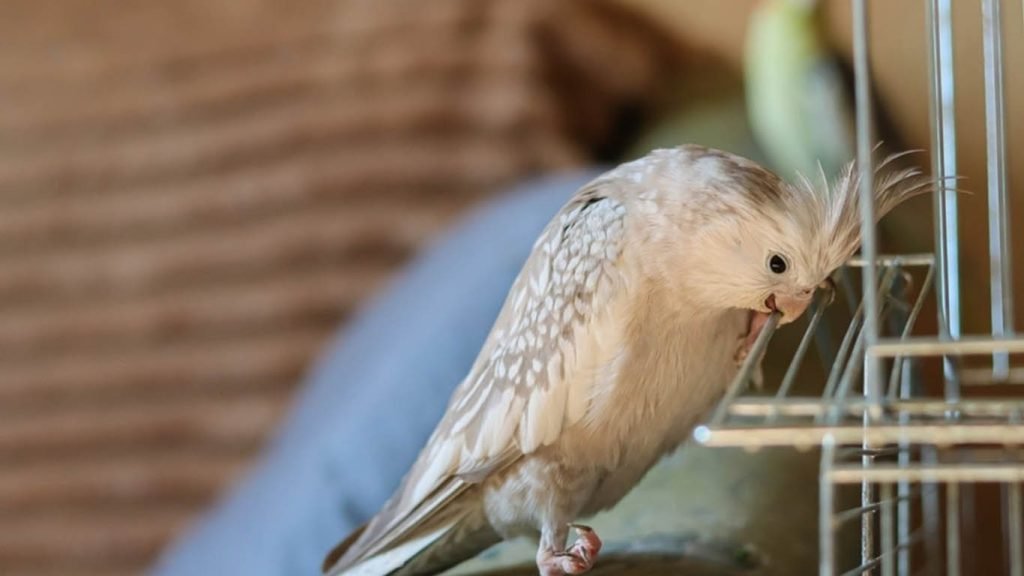
Regular observation and careful monitoring of your bird’s behavior can help you identify any signs of infection or infestation. If you notice any changes in appetite, droppings, or activity levels, it’s important to consult a veterinarian for a thorough examination and appropriate treatment.
Liver Disorders
Liver disorders can also affect White Faced Cockatiels. These can be caused by a variety of factors, including poor nutrition, exposure to toxins, and certain infections. Liver problems can lead to decreased appetite, weight loss, jaundice, and overall weakness.
Ensuring a balanced diet, free from excessive fatty and sugary foods, and providing a clean and toxin-free environment can help prevent liver disorders. Regular vet check-ups and monitoring of liver enzymes through blood tests can also be beneficial in maintaining your bird’s liver health.
Obesity
White Faced Cockatiels, like many other pet birds, are prone to obesity if not provided with proper exercise and a well-balanced diet. Obesity can lead to a range of health complications, including heart problems, joint pain, and a shortened lifespan.
To prevent obesity, be mindful of the portions and types of food you offer your cockatiel. Provide plenty of opportunities for exercise, such as out-of-cage time, interactive toys, and flight training. Regular weigh-ins and consultations with a vet can help you monitor your bird’s weight and adjust their diet and exercise routine accordingly.
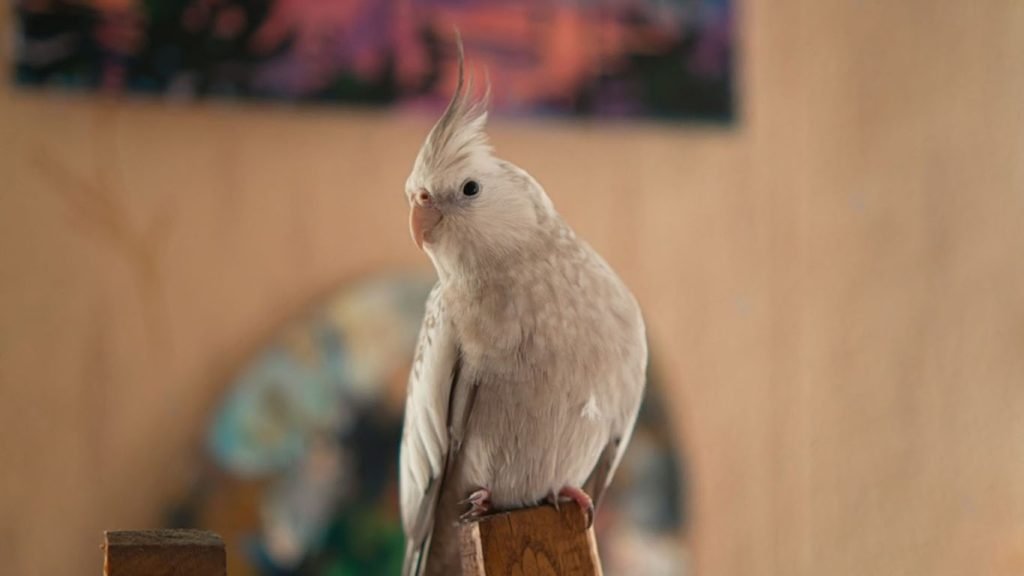
Remember, a healthy and happy White Faced Cockatiel requires proactive care and attention. By recognizing potential problems and taking preventive measures, you can provide your feathered friend with a thriving and vibrant life.
| Common Health Issues | Signs and Symptoms | Preventive Measures |
|---|---|---|
| Bacterial, Yeast Infections, and Parasites | – Digestive problems – Feather plucking – Weight loss – Lethargy | – Regular observation – Consult a veterinarian for treatment – Maintain a clean environment |
| Liver Disorders | – Decreased appetite – Weight loss – Jaundice – Weakness | – Balanced diet – Toxin-free environment – Regular vet check-ups – Monitoring liver enzymes |
| Obesity | – Weight gain – Difficulty flying – Joint pain | – Portion control – Balanced diet – Exercise opportunities |
Availability and Price of White Faced Cockatiels
White Faced Cockatiels are popular mutations and are readily available through reputable breeders. They come in various color variations, including gray, lutino, pearl, pied, and cinnamon. Finding a White Faced Cockatiel for sale is relatively easy due to their availability in the pet bird market.
When it comes to pricing, the cost of a White Faced Cockatiel can vary depending on several factors. The age, mutation, and overall health of the bird can influence its price. On average, you can expect to pay between $200 and $300 for a White Faced Cockatiel.
It’s always recommended to purchase a White Faced Cockatiel from a reputable breeder who breeds for health and temperament. This ensures that you are getting a well-cared-for bird that has been bred responsibly.
If you’re considering adding a White Faced Cockatiel to your family, be sure to research local breeders and inquire about their available stock. Additionally, you may find White Faced Cockatiels for sale at bird shows, pet expos, or through online classifieds.
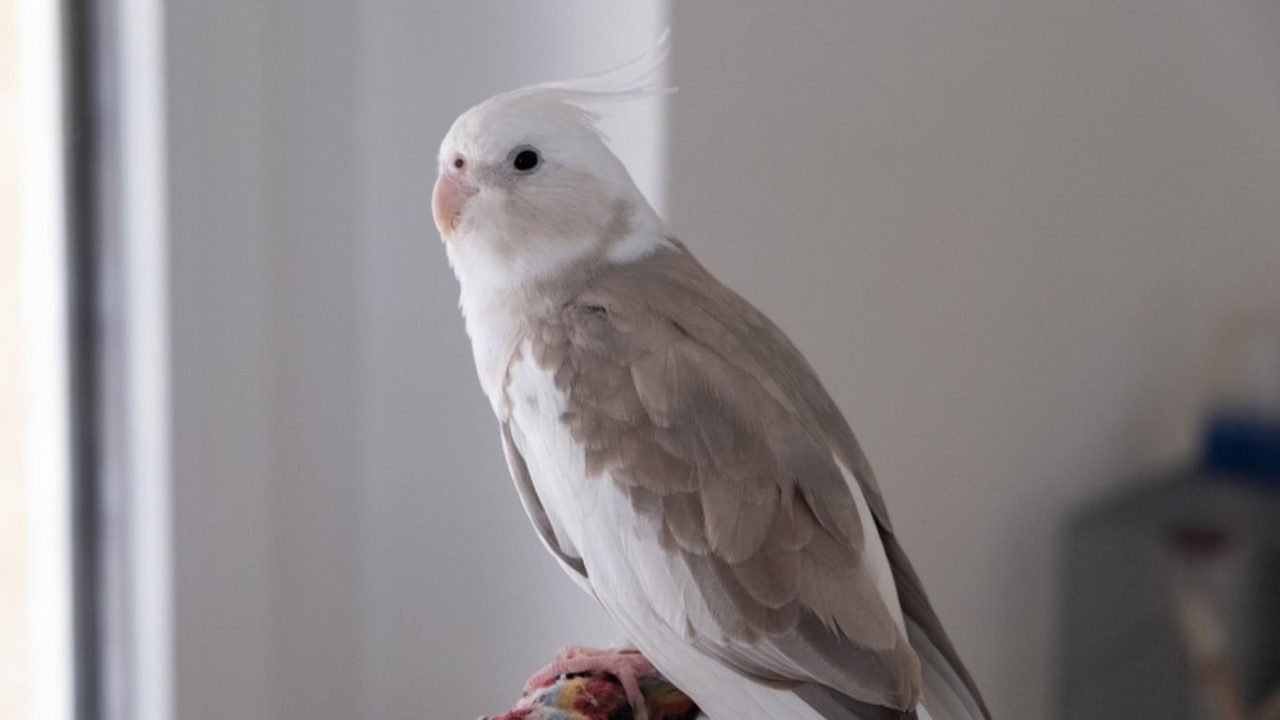
Join Our GeoZoo Family
Subscribe to our Newsletter
Final Remarks
In the end, White Faced Cockatiels are captivating and unique birds that make wonderful pets. Their striking white or grayish face sets them apart from other cockatiel mutations, making them a visually appealing choice for bird enthusiasts. With their adaptability and social nature, these cockatiels can easily become a beloved part of your family.
However, owning a White Faced Cockatiel is not just about their appearance; it also requires proper care and attention. Providing a spacious cage, a balanced diet, and ample opportunities for exercise and social interaction are crucial for their overall well-being. Regular vet check-ups and a focus on maintaining their health will contribute to their long and happy lives.
If you’re considering adding a White Faced Cockatiel to your family, be prepared to invest time and effort into their care. With the right commitment, these birds can bring joy, companionship, and endless entertainment into your home. So, before you bring a White Faced Cockatiel into your life, ensure you are ready to provide the love and care they deserve.
FAQ
What is a White Faced Cockatiel?
A White Faced Cockatiel is a striking cockatiel mutation that lacks yellow color and has no cheek patches. It has a white or grayish face, with males having a brilliant white face and females having a grayish coloration.
Where can I find White Faced Cockatiels?
White Faced Cockatiels are not found in the wild and are only available through breeders.
What is the natural habitat of White Faced Cockatiels?
White Faced Cockatiels’ natural habitat is in Australia, specifically in the mainland regions except for Tasmania. They are nomadic birds, adapting to various habitats and moving with seasonal fluctuations of food and water supplies.
How big do White Faced Cockatiels grow?
White Faced Cockatiels have a length of 12 to 13 inches and weigh around 3 to 4 ounces.
What kind of cage do White Faced Cockatiels need?
White Faced Cockatiels require a spacious cage of at least 24″ length by 18″ high and 18″ wide.
What should I feed my White Faced Cockatiel?
White Faced Cockatiels should be provided with a variety of sprouts, seeds, nuts, fruits, vegetables, and commercial pellets for a balanced diet.
Are White Faced Cockatiels social birds?
Yes, White Faced Cockatiels are social birds that enjoy spending time with their family members and other cockatiels.
Do White Faced Cockatiels require exercise?
Yes, White Faced Cockatiels are active birds that enjoy climbing, playing, and exploring their environment.
Are White Faced Cockatiels easy to breed?
Yes, White Faced Cockatiels are easy to breed and readily nest when provided with a nest box and suitable materials.
How can I tell the gender of a White Faced Cockatiel?
Male White Faced Cockatiels have a whiter head and no barred markings underneath their tail feathers, while females have a grayish head and barred markings.
What are the potential health issues for White Faced Cockatiels?
White Faced Cockatiels can be susceptible to bacterial and yeast infections, parasites, liver disorders, and obesity.
Where can I buy a White Faced Cockatiel?
White Faced Cockatiels are available through breeders, and the price can range from $200 to $300 depending on various factors.

